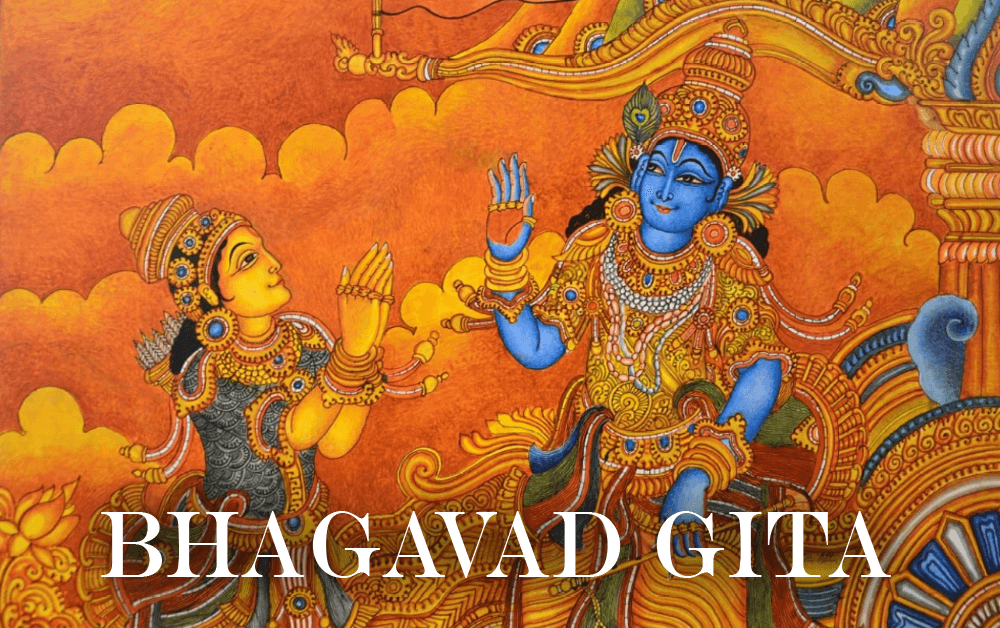Bhagavad Gita

Upanishads is a collection of Hindu religious Sanskrit texts based on spiritual concepts and philosophical ideas of Sanatana Darma or Hinduism. Upanishads is also known as Vedanta and it is the part of Vedas. Mainly Vedas are divided into four. Rig Veda, Sama Veda, Yajur Veda and Atharva Veda and these Vedas has three categories such as Karma Kanda, Upasana Kanda, and Jnana Kanda. These Jnana kanda is known as Upanishads and it deals with actions or rituals of Hindu religious customs. Basically Upanishad is divided into ten and it is called Dashopanishad. Dashopanishad are Isha, Kena, Katha, Prashna, Mundra, Mandukya, Taittiriya, Aitareya, Chandogya and Brihadaranyaka. Rig veda includes Two main Upanishads namely Aitareya Upanishad and Kausitaki Upanishad. Sama Veda includes Chandogya Upanishad and Kena Upanishad. Yajur Veda contains Brihadaranyaka Upanishad, Isha Upanishad, Taittiriya Upanishad, Katha Upanishad, Shvetashvatara Upanishad and Maitiri Upanishad. Atharva Veda includes Mundaka Upanishad, Mandukya Upanishad and Prashna Upanishad. Brahman and Atman are the two fundamental elements in Upanishads. Brahman is the universal truth or God and Atman is Soul. Brihadaranyaka and Chandogya are the two ancient upanishads. Taittereya, Aitareya and Kausilaki are the three ancient prose Upanishads. Kena is the oldest of Verse and two later upanishads are Prasna and Mandukya. There are four main teachings included in Upanishads and these teachings are known as Wisdom Teachings. The first and main teaching is Prajnanm Brahma. It is about saying that consciousness and intelligence are synonym to universal truth. Tat Tvam Asi is the second teaching that defines God and people are same. The next teaching Ayam Atma Brahma deals with that consciousness is always within yourselves. The fourth and last teaching is Aham Brahma Asmi acknowledging that a person who is enlightened declares his self to be God. Samsara, Karma, Dharma and Moksha are the three basic principles of Upanishads. The first principle is Samsara it is otherwise known as reincarnation. The concept of samsara is deals with the reborn again. The idea is that after the death, body will burnt out or burried, but the soul will reborn again in another body. This reincarnation is not only for human beings, but also for animals too. The next principle is Karma. It means action. The concept of Karma is that all the deeds whether it is good or bad will have the same consequences in the next life. That means if you are doing good in this life will surely reborn in an advance condition. But if you are destructive in this life will reborn in worse condition. This is one of the fundamental fact law of Universe. According to Hindu religion, Moksha is the last principle of upanishad and central intention of people after death. Moksha is the liberation from the world of samsara or birth and death.
Get weekly updates on the newest articles, quotes and newsletters right in your mailbox. Subscribe now
